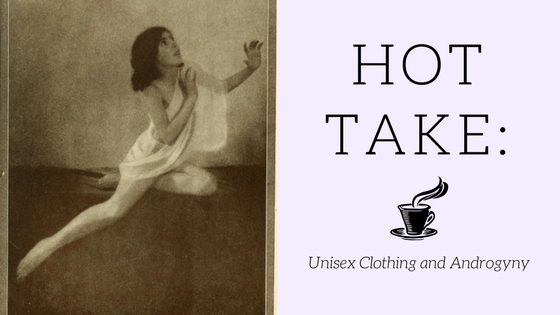Conversation around fashion still clothes-minded

Helen Moller under Creative Commons license
For much of mankind’s history, clothing has been gendered. Here the case is made that these designations have no inherent value, and the benefits of accepting androgynous dress are unparalleled.
Here’s a hot take: the future of fashion is genderless. You should be excited about that.
Clothes are just one of the wild ways in which we add dynamism to our appearance, and probably the mechanism to achieve this that has such a large consumer base. I mean, everyone’s got to wear clothes, right? And because of this necessity, fashion has been a burgeoning industry since the beginning of time. People said “might as well look good” before the invention of the wheel and they’re still saying it today, and a whole lot louder now that there’s Instagram to please.
But another thing about our contemporary moment isn’t just that we’re image-obsessed, but that the focus on gender and what it means is more relevant than ever. The controversies associated with these ideas, which always seem to be more newsworthy than the ideas themselves, are the main evidence of the movement.
Think about how many trite Twitter tiffs you’ve read that go something like “There are only two genders!” quickly followed by “Actually, there are exactly 97 genders, and here’s my treatise in which I’ve itemized them by level of societal acceptance.”
Think what you want, I guess, but neither extreme seems all that on the nose. The truth isn’t something that’s within grasp at the moment, but it’s clear that gender is getting more and more nebulous.
And while social media can definitely be a hellscape, it’s also a platform for self expression more than anything. So people, and kids especially, are finding themselves in the midst of a conversation about gender and, thanks to technological advancements, have a way to easily join that conversation. Enter the fashion world, and 2018 is the perfect breeding ground for non-gendered clothing to flourish.
To be clear, post-2010 didn’t invent androgynous clothing by any stretch, and movements throughout history have broken gender barriers in clothing. But there’s something different this time in mainstream culture: it’s not just one trend. It’s not shoulder pads or boyfriend jeans. Suddenly, the demand for unisex fashion is being realized, and the market is taking notice.
But even if androgynous clothing it getting off the ground, why should it matter? Simply because kids ought to be able to wear what they want. And new brands (despite their oftentimes steep price tags) are a great start, but even better is a change in society — what we think about who can wear what.
Once every bit of stigma is gone on whether girls can wear ties or whether boys can wear skirts, creative and fashion-savvy kids will have more agency to do what they’ve always been good at: scoping out the local thrift store and making things work.
The implication of this is positive change in people’s lives, especially for an increasingly LGBT-identified youth. Aesthetics may only be skin-deep, but in reality they are a huge deal with regards to gender expression. Easy access to and widespread acceptance of clothing that quells gender dysphoria, or at the very least allows for some semblance of self-confidence, is imperative if we are to live in an inclusive society.
And the last argument comes from the sake of looking good. Shying away from clothes that even get close to bending gender roles closes a lot of doors for a lot of folks in the realm of fashion. Everyone’s personal comfort should be prioritized, but on the whole it would be a shame if people never quit wearing the same dry, stereotypical pieces labeled “male” and “female.” Gender is the final frontier before we all start serving looks, whether the end goal is practicality or avante garde expressionism or just finally finding something decent to wear.
Gender roles will permeate into the foreseeable future, and there’s not really much to do to halt that completely. But there’s no reason to let that win. These arbitrary lines only slow us down, creatively and emotionally. Clothes are a means to portray self-confidence, and can contribute to our real world successes. Trying to keep androgynous clothing from becoming widespread is merely swimming upstream, against the flow of progress.

